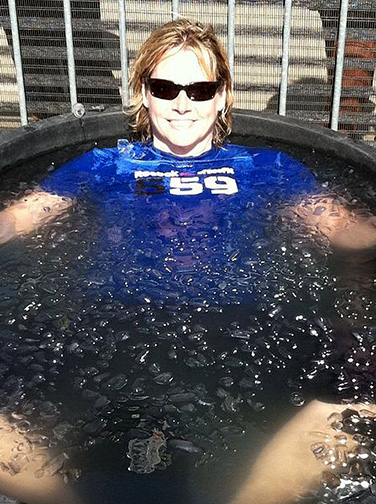Feb 20, 2019Are ice baths really effective as treatment?
Ice baths are often used to reduce inflammation of those sore muscles. They constrict the blood vessels, and this results in flushing the lactic acid out of the tissues and reducing the swelling. If the athlete gets out of the ice bath and begins to warm up , blood rushes back in to the muscle and boosts the recovery process.

That’s the idea behind using an ice bath for recovery. But is this actually the case, or is it more the case of a mental benefit—where the athlete feels better after the ice bath and has belief that the treatment worked? An article on theinertia.com discusses two studies that have been conducted on this topic.
In 2013, the United States Army conducted a study in which it looked at whether or not the “most beneficial course of treatment should be to block inflammation or if it is sensible to allow inflammatory processes to progress naturally.”
“To date,” the study reported, “there is no clear message with regards to the effect and mode of action of anti-inflammatory interventions and how they can best promote muscle healing and functional recovery. The opinion here is that the therapy should not be to obliterate the inflammatory response, but instead to restore the normal regulation of inflammatory processes.”
And research used in a paper published in 2015 in the Journal of Physiology found that cold water immersion hinders muscle recovery rather than speed up the process. “Cold water immersion is a popular strategy to recover from exercise,” the abstract reads. “However, whether regular cold water immersion influences muscle adaptations to strength training is not well understood.”
» ALSO SEE: Putting R.I.C.E. to rest: Treating pain & inflammation
In the first part of their study, 21 men did an intensive workout two days a week for the 12 weeks. Eleven took 10-minute ice baths after their workout, while the other 10 warmed down on exercise bikes. After the 12-week period, “muscle strength and mass had increased more in the active warm down group than the ice bath group.”
The second part of the study focused more on the muscles themselves. Nine men did single-leg strength exercises, then either sat in a bath or cooled down on the bike. Before they started, researchers took muscle biopsies before the athletes started, and then again two hours after the workout, as well 24 hours later, and 48 hours later.
“Cold water immersion attenuated long term gains in muscle mass and strength,” they wrote. “It also blunted the activation of key proteins and satellite cells in skeletal muscle up to two days after strength exercise. Individuals who use strength training to improve athletic performance, recover from injury or maintain their health should, therefore, reconsider whether to use cold water immersion as an adjuvant to their training.”
Still, there’s no doubt many fitness and sports medicine professionals place value on the use of ice baths. Brian Mackenzie, a well-know conditioning professional who is credited for inventing CrossFit Endurance, said in the article on insertia.com:
“Beyond helping you recover better from training, it hits a neurological reset button, similar to when you take a 15 minute, deep REM cycle nap. You also tap into the endocrine system and get your hormones moving. Plus, you touch cellular receptors for temperature regulation that we normally neglect, so you can better handle hot and cold environments. You also rev up your metabolism.”
So the debate continues. But even it’s a matter of having a placebo effect, this may be a valuable tool for certain athletes — and there’s no evidence that ice baths are harmful. So if your athletes want to use ice baths as a recovery tool, you can tell them to jump into the cold water.



